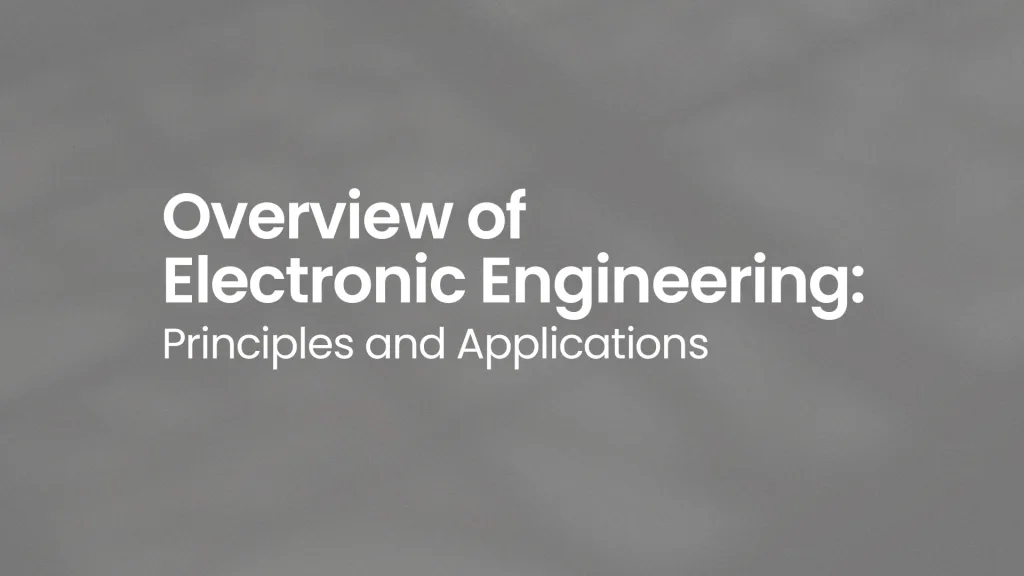Hardware engineering remains a cornerstone in the rapidly evolving landscape of technology. It represents a rich tapestry with intricacies that span from elemental circuit design to complex system development and rigorous testing procedures.
What is Hardware Engineering?
Hardware Engineering is the discipline of engineering focused on the design, development, and testing of physical components and systems. This can include anything from computer chips and circuit boards to printers and routers. While software engineering deals with the “logic” of a computing system, hardware engineering ensures that the physical components can execute that logic efficiently.
On the other hand, electronic engineering requires electrical theories, electromagnetic fields, and solid-state electronics knowledge. In contrast, hardware engineering requires expertise in computer architecture, digital logic design, and often software skills for firmware development.
The Imperative of Design
One cannot understate the significance of the design phase. Here, engineers conceptualize the layout of an integrated circuit (IC), considering factors such as power efficiency, heat dissipation, and latency. They often employ advanced software tools like CAD (Computer-Aided Design) to blueprint the embryonic stages of a hardware masterpiece.
Approaches to Circuit Design
- Analog Circuits: Predominantly, these circuits are employed for signal processing tasks. Voltage levels are infinitely variable, making analog circuitry indispensable in operations like amplification and modulation.
- Digital Circuits: Unlike analog circuits, digital circuits operate with discrete voltage levels. Utilized in computational applications, these circuits play a pivotal role in the functionality of FPGAs and ASICs.
- Mixed-Signal Circuits: This is the amalgamation of analog and digital elements, commonly seen in devices like smartphones that require signal processing and computational capabilities.
Advancement through Development
After conceptualizing the design, the next progression involves transforming it into a tangible product. Development is the crucible where design ideologies are metamorphosed into palpable circuits. Soldering techniques, PCB layouts, and firmware are carefully calibrated to ensure seamless operation.
Methodologies for System Optimization
- Prototyping: Before mass production, engineers create prototypes to conduct validation tests.
- High-Level Synthesis (HLS): This advanced technique assists engineers in automatically generating hardware from C/C++ code, thus accelerating the developmental cycle.
Quality Assurance and Testing
In the final act of this technological theater, engineers subject the hardware to a barrage of tests. These range from unit tests to integration tests and are essential in identifying potential design flaws or operational inefficiencies. LiDAR systems, for instance, require meticulous calibration and testing to assure optimal performance and safety.
Benchmarks for Reliability
- Stress Testing: Components are pushed beyond their limits to identify potential failure points.
- Performance Metrics: Various benchmarks such as clock speed, power usage, and latency are meticulously evaluated.
- Third-Party Validation: Collaborative partnerships often yield a more comprehensive evaluation, ensuring that the hardware is up to industry standards.
Conclusion: The Interdependence of Hardware and Software
Turning circuit schematics into a working piece of hardware is full of obstacles. However, the outcome combines creativity, knowledge, and technological capability. In this ever-changing industry, having hardware solutions that can adapt and withstand challenges is crucial for improving human society and the many industries it affects.
While we’ve primarily focused on Hardware Engineering, it’s also essential to understand that hardware and software are profoundly interdependent. One can only function effectively with the other, which is why a deep understanding of hardware engineering can significantly impact the effectiveness of software applications. This is especially true in specialized fields like High-Performance Computing (HPC), where hardware is often custom-engineered to achieve performance metrics that standard systems can’t meet.
In a world increasingly driven by digital technology, hardware engineering remains at the forefront, enabling innovations that redefine what’s possible. So, the next time you marvel at a new software application, spare a thought for the hardware engineers who made it all possible.



